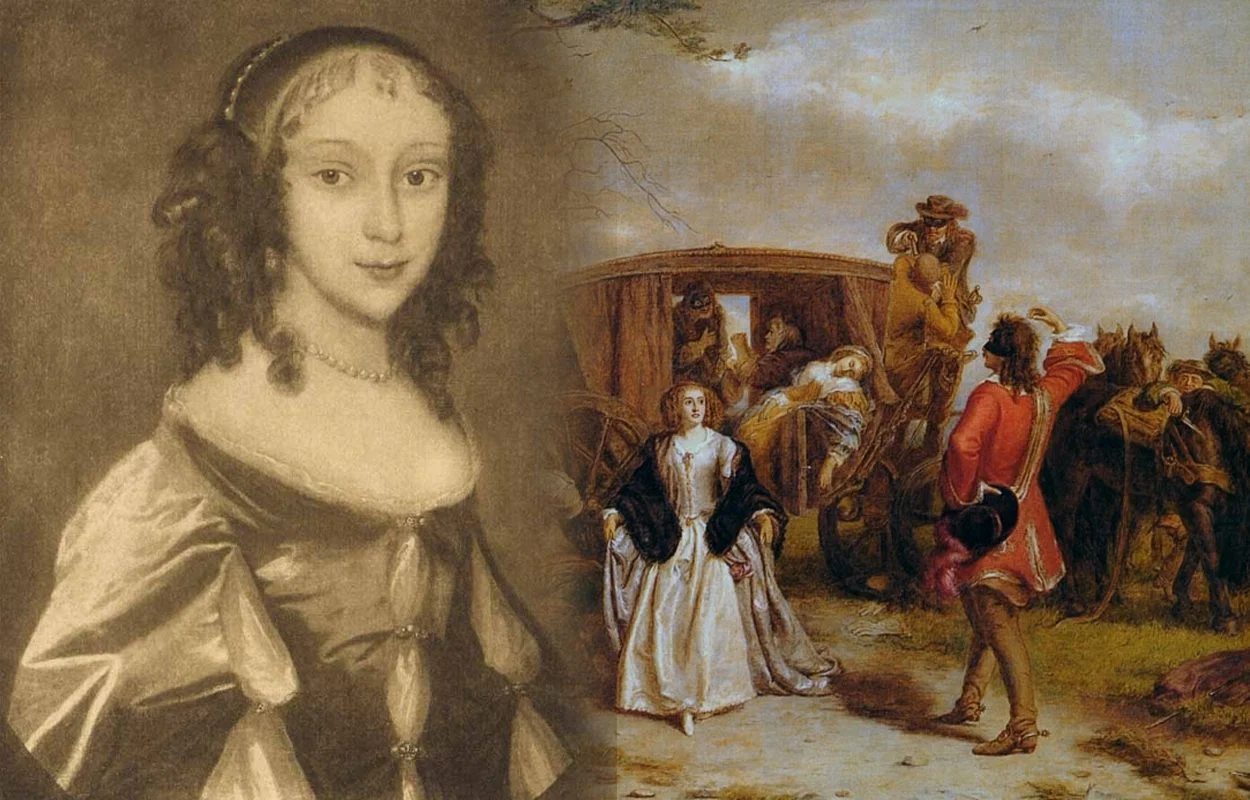Katherine Ferrers was an English gentlewoman and heiress, who allegedly resorted to highway robbery to settle her dwindling fortune, leading to her legendary name as the “Wicked Lady.”
Katherine was born to Knighton Ferrers and his wife, the former Katherine (or Catherine) Walters in 1634, in the village of Bayford in Hertfordshire, England. The Ferrers family were favoured by both Henry VIII and Edward VI, with Edward bestowing upon them vast estates across the Hertfordshire county.
Following the deaths of all members of the male line in her family, Katherine was appointed sole heir to the family estates, however, her widowed mother married Sir Simon Fanshawe, a committed Royalist who supported King Charles I during the English Civil War.
As a result of the Parliamentary Sequestration Committee in 1643, estates of Royalists were placed into the hands of local commissioners, including that of the Fanshawe family, who then arranged for Katherine to marry Thomas Fanshawe, Sir Simon Fanshawe’s nephew, to gain control of the Ferrers family holdings.
Thomas disposed of many of her inherited assets, with the diarist Samuel Pepys describing him as “a witty but rascally fellow, without a penny in his purse.”
Katherine died in 1660 at the age of 26 and was buried at St Mary’s church in Ware. With her death, the Ferrers line also died out, and the remainder of her estates were sold off by Thomas to settle his own debts.
According to local legend, to redress her dwindling fortune at the hands of her husband, Katherine resulted to highway robbery, arson, and murder, earning her the name as the “Wicked Lady.”
In this alternate narrative, Katherine was shot on Nomansland Common on the edge of Wheathampstead, and died of her wounds while riding back to a secret hideout at Markyate Cell.
These exploits are all speculated, with the historian J.E. Cussens suggesting that no contemporary records attribute these activities of mayhem to Katherine, and that the moniker of “Wicked Lady” was only associated long after her death. Furthermore, there is no mention of Katherine in the works of Alexander Smith`s Complete History of the Lives of the Most Notorious Highwaymen, published in 1714.
It is most likely that she was confused by name (no relation) with Laurence Shirley, the “Wicked” Lord Ferrers, who was the last peer to be hanged in 1760 following his conviction for murdering his steward.
J.E. Cussen further notes in his History of Hertfordshire (1870–81), that no mention of Katherine or her supposed career of highway robbery is mentioned before the execution of the “Wicked” Lord Ferrers, with history unfairly naming her the “Wicked Lady”.
This unfortunate association continued into the modern era, with the 1944 novel “The Life and Death of the Wicked Lady Skelton” being loosely based on Katherine’s supposed life, the 1945 film version called “The Wicked Lady”, and “The Highway Trilogy” novel series.
Header Image Credit : Public Domain





